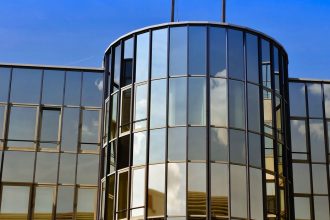As we grapple with the pressing challenges of climate change and dissipating natural resources, the construction industry stands at a crucial crossroads. It is responsible for approximately 39% of global carbon emissions, making it imperative that we shift towards sustainable practices. Fortunately, a movement is underway, characterized by innovative practices in green building design and sustainable real estate development. This post will explore these innovations, including efforts informed by initiatives like the Living Building Challenge, and how they contribute to a more environmentally friendly future.
1. Understanding Green Building
Green building refers to the practice of creating structures that use resources more efficiently, minimize waste, and reduce the overall environmental impact during their life cycle—from construction to operation and eventual demolition or renovation. This involves innovative design, sustainable materials, energy-efficient systems, and responsible site selection.
Key Principles of Green Building:
- Energy Efficiency: Utilizing technology and design strategies to reduce energy demand.
- Water Efficiency: Saving water through efficient fixtures, rainwater harvesting, and waste minimization.
- Sustainable Materials: Using renewable resources, recycled materials, and environmentally friendly products.
- Indoor Environmental Quality: Ensuring the health and comfort of occupants through good ventilation, natural lighting, and reduced exposure to toxic substances.
- Site Selection: Considering environmental sensitivity and zoning regulations when choosing locations for new developments.
2. The Living Building Challenge
One of the most progressive frameworks guiding sustainable building practices is the Living Building Challenge (LBC), established by the International Living Future Institute. It is often described as the most ambitious sustainable building certification program in the world. The LBC encompasses a broad array of performance areas to create buildings that are not only environmentally sustainable but also socially just.
Core Petals of the LBC:
- Place: Encourages regenerative design that exists in harmony with local ecosystems.
- Water: Achieves a net-water-positive status by capturing, treating, and reusing all water on-site.
- Energy: Operates on a net-zero energy basis, meaning it produces as much energy as it consumes over the year.
- Health and Happiness: Focuses on the wellbeing of occupants through design principles that enhance comfort and productivity.
- Materials: Promotes the use of healthy, non-toxic materials that avoid negative impacts on human and environmental health.
- Equity: Ensures that the design supports a growing democracy and economic prosperity.
- Beauty: Advocates for aesthetics in the design, leading to an inspiring and uplifting environment.
Case Studies:
-
The Bullitt Center, Seattle: Often referred to as the "greenest commercial building in the world," the Bullitt Center utilizes solar energy to meet its energy needs, captures rainwater for potable use, and provides a workspace that enhances employee wellness.
- The Edge, Amsterdam: Notable for its intelligent design, the Edge produces more energy than it consumes, features a smart lighting system controlled by occupant preferences, and uses recycled materials extensively.
3. Innovative Practices in Low-Carbon Construction
Apart from frameworks like the LBC, various innovative practices are emerging in low-carbon construction:
A. Prefabrication and Modular Construction
Prefabricated and modular construction methods allow for components to be manufactured off-site under controlled conditions, leading to reduced waste, shorter construction timeframes, and lower carbon footprints.
B. Advanced Materials
Researchers and industry professionals are exploring and developing advanced materials such as:
- Cross-Laminated Timber (CLT): A sustainable alternative to traditional concrete and steel, CLT significantly lowers carbon emissions during construction.
- Recycled Plastics and Composites: Utilizing recycled materials in building components reduces dependency on virgin resources.
- Bio-based Materials: Innovations in mycelium, hempcrete, and other biodegradable materials offer alternatives with lower environmental impacts.
C. Green Roofs and Living Walls
Incorporating natural elements like green roofs and living walls can significantly enhance building insulation, reduce urban heat effects, improve air quality, and promote biodiversity.
D. Smart Building Technology
Integrating technology into building management systems can optimize resource usage. Systems that monitor energy consumption and environmental conditions promote real-time adjustments, further decreasing overall impact.
4. Sustainable Real Estate Development
The evolution of sustainable real estate development emphasizes providing communities with healthy living environments while simultaneously addressing climate change.
A. Mixed-Use Development
Designing mixed-use developments helps reduce the need for long commutes, encouraging walking, cycling, and the use of public transportation, which significantly lowers carbon footprints.
B. Community Engagement
Real estate developers are increasingly involving local communities in the planning process to ensure that developments meet the needs of the residents, leading to more sustainable and socially responsible projects.
C. Resilience Planning
Considering the impacts of climate change, sustainable real estate development now also involves resilience planning—designing buildings that can withstand extreme weather events and minimizing risk factors associated with climate-related disasters.
5. Future Directions
The construction industry is at a pivotal moment where innovative, sustainable practices are not only a choice but a necessity. As consumers become more environmentally conscious, expectations for greener buildings will only rise. Policymakers and industry stakeholders must collaborate to create regulations and incentives that support the transition to low-carbon construction.
Conclusion
The journey towards building a greener future involves a collective commitment to embracing sustainable practices in construction and real estate development. By utilizing innovative designs, adhering to frameworks like the Living Building Challenge, and prioritizing environmental integrity, we can create spaces that not only serve human needs but also respect and rejuvenate the planet. The future of construction is not just about creating buildings; it is about fostering resilience, health, and sustainability for generations to come.







